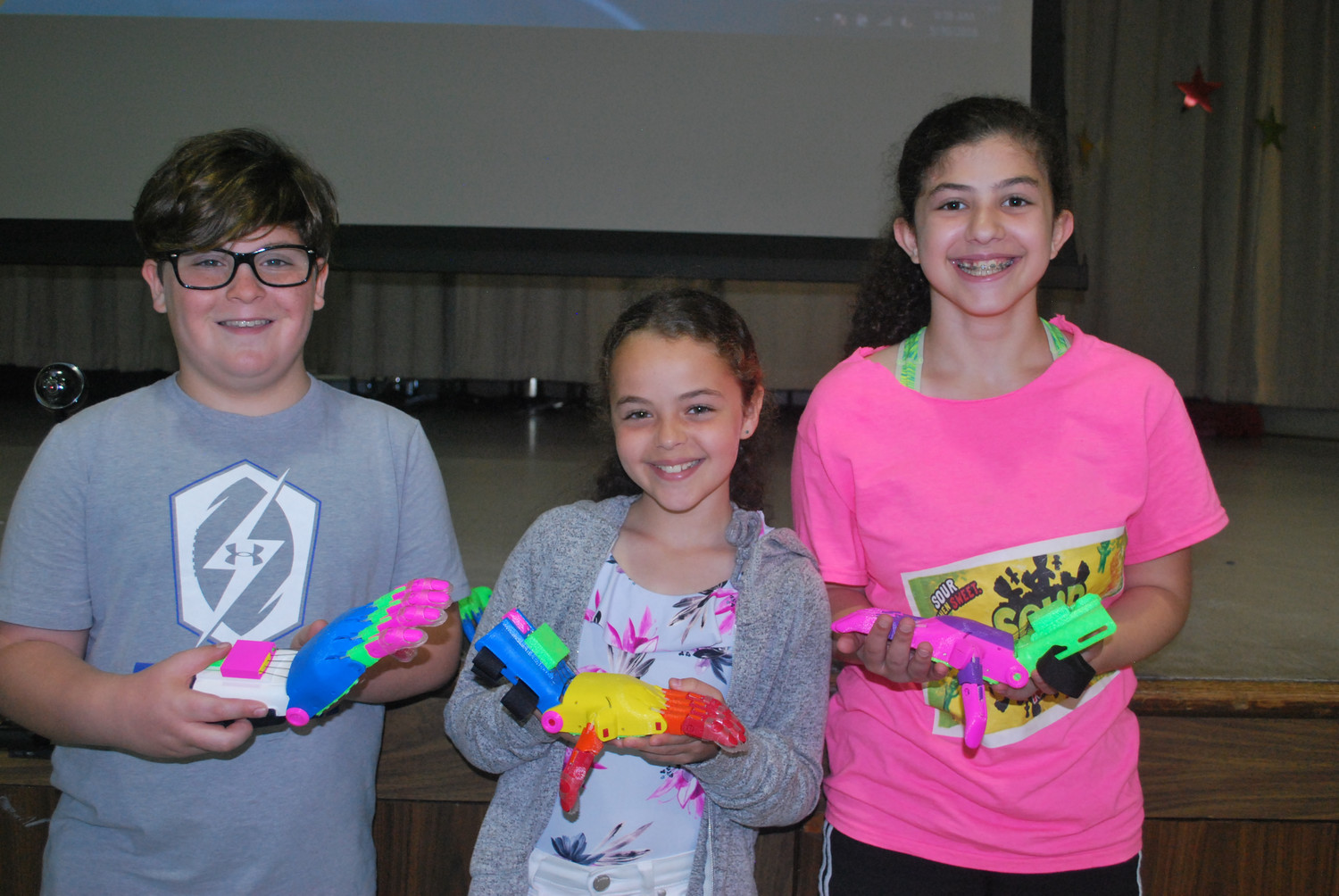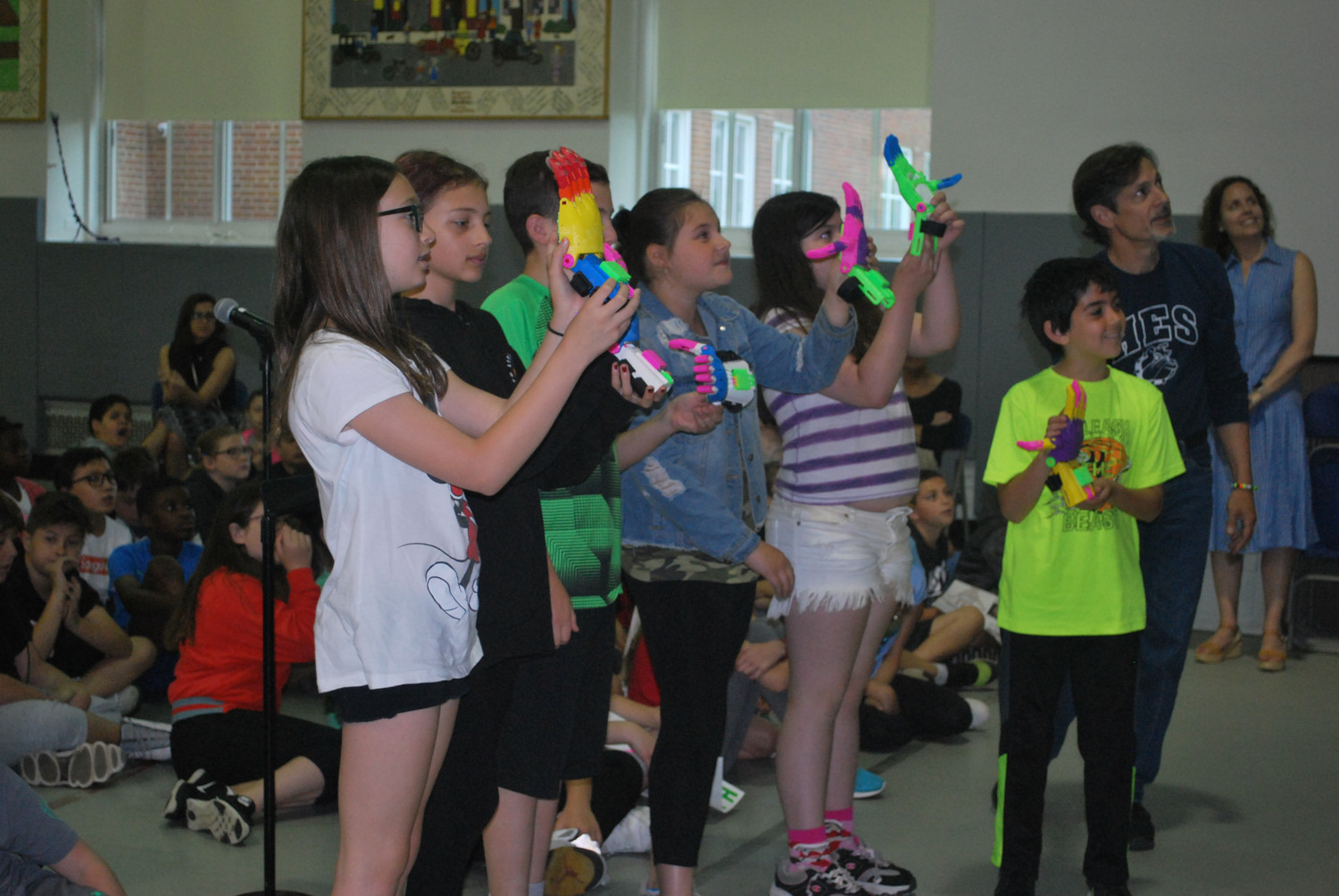Designing helping hands at Hewlett Elementary School
Fifth-graders produce prostheses for Different Heroes
Standing at a microphone in the combination auditorium-gymnasium of Hewlett Elementary School at an assembly on May 30, several fifth-graders spoke to Sarah Haight and her son Cameron, 5.
Through the school’s Tech Design course, the students had made a half-dozen 3-D-printed prosthetic hands this winter for children who have what are called “limb differences.” The hands are being donated to the Different Heroes organization, based in South Carolina, and will be given to children attending the Hands to Love summer camp at Camp Crystal Lake in Starke, Fla.
Different Heroes is a private, nonprofit group that raises awareness and acceptance of limb differences. It is the parent organization of Hand Challenge, which receives and distributes hundreds of 3-D-printed prosthetic hands to children around the world.
Hands to Love, also known as H2L, is a Florida-based group for children with upper limb differences and their families. Its volunteers include medical, educational and family support professionals who coordinate the H2L network of families. It also offers family-to-family mentoring, events such as Hand Camp and an online resource with a safe social network.
“It was energizing and empowering for the students to see what they made,” said Hewlett Elementary Principal Christopher Uccellini, who, along with teacher Kristina Gallagher, created the tech design course.
Uccellini served as master of ceremonies at the assembly. The Haights live in South Carolina, and Cameron, who has a prosthetic hand, attends the Hands to Love camp. His mother, who has two older boys, devotes much of her time to Different Heroes. Cameron was born with amniotic band syndrome, which occurs when a fetus becomes entangled in fibrous, string-like amniotic bands in the womb, restricting blood flow. It can cause any of a number of birth defects, depending on the body parts that are affected. Cameron’s hands, feet, right arm, the backs of his legs and his scalp were affected.
“We’ve taken a lot of children who could not have attended camp and now will receive prosthetics,” Haight told the students as Cameron squirmed in and out of her grasp. She noted that the children not only have fun at camp, but also learn to do things like tie their shoes — a simple task that becomes much more difficult with a prosthetic hand.
“It was eye-opening for the kids to see all of the work that went into it,” Gallagher said of the process of making the hands. “They also learned how to work together.”Teams of students worked on making the prostheses. Everyone had a job, from researcher to assembler to reporter. “I felt proud of myself for helping kids who needed prosthetics,” said Alex Sita, an assembler. “It felt good.” He added, perhaps not coincidentally, that he and his twin brother want to start an engineering company someday.
Niva Ettedgy was a reporter who kept track of the progress of the prosthesis-making. “It’s more than learning, because it showed that it really does make a difference,” she said of making and then donating the artificial hands.
Researcher Leighe Yona, who learned how the hands are made, said she was proud of what she and her classmates had accomplished. “I know they help,” she said of the prostheses, “and make a difference for children without a limb.”
For more information, go to www.differentheroes.com, www.handchallenge.com or handstolove.org.

 44.0°,
Mostly Cloudy
44.0°,
Mostly Cloudy 







